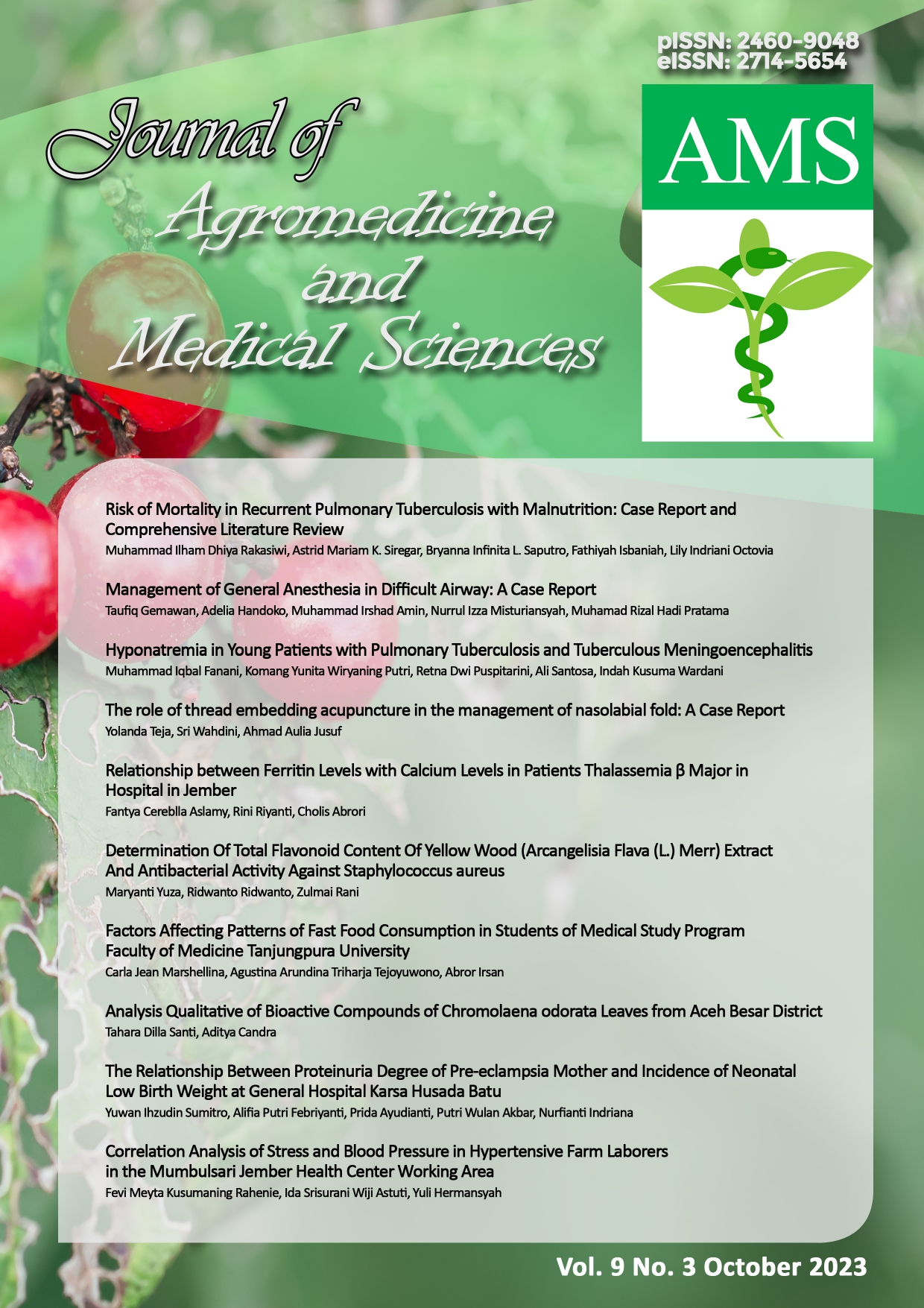The role of thread embedding acupuncture in the management of nasolabial fold: A Case Report
DOI:
https://doi.org/10.19184/ams.v9i3.30187Abstract
Background: Aging occurs in all organs, including the skin. As the largest organ of the body, wrinkles on the skin show signs of aging that are visible and affect appearance. Thread embedding acupuncture (akupunktur tanam benang/ATB) is one of acupuncture methods used in various cases, including aesthetics. This case report describes the role of ATB in the management of nasolabial folds (NLF).
Case Illustration: A 45-year-old woman came complaints of deep and long smile lines. On physical examination, the NLF length (measured with digital vernier caliper) right/left: 34.15/30.3 mm; Wrinkle severity rating scale (WSRS) right/left: 3/3. ATB was given once and the results were observed until week 12. The best results were obtained at week 12 of follow-up (NLF: 22.00/21.46 mm; WSRS: 2/2)
Conclusion: NLF improvement in ATB is getting better over time. Further clinical trials are needed to determine the effectiveness of ATB in improving NLF.
Keywords: Thread embedding acupuncture; Wrinkle; Aesthetic acupuncture






















